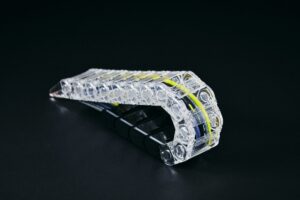Discover INAC US’s Clear Plastic Resin Prototyping Service, where we excel in creating transparent prototypes using materials like polycarbonate.
Our expert team employs advanced 3-axis and 5-axis machining centers to shape a variety of materials with precision.
Experience exceptional clarity in your prototypes with our unique high transparency treatment, making INAC US the go-to choice for your clear plastic resin machining needs.
